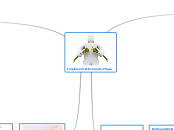
Implement & Evaluate Phase
Rothwell, Benscoter, King, & King
Evaluation and Implementing
Instructional Design
Evaluating Instructional & Noninstructional Interventions
Developing Formative Evaluation Plan
Determining Purpose, Objectives, Audience, and Subject
Assessing Information Needs
Considering Proper Protocol
Describing the Population to Be Studied and Selecting the Subjects
Identifying Other ?Variables of Importance
Formulating a Study Design
Formulating a Management Plan to Guide the Study
Conducting Formative Evaluation
Expert Reviews
Management or executive rehearsals
Individualized pretests and pilot test
Group pretests and pilot test
Summative Evaluations
Creating & Disseminating the Report
Revising Instructional & Noninstructional Solutions Base on Data
Types of Revisions
Program Revison
Product Revision
Gaining Stakeholder Support Revisions
Implementing Revisions to Delivery of Products/Programs
Implementing Instructional & Noninstructional Interventons
Creating a Vision for Change
Planning for Implementation and Dissemination of the Intervention
Planning for Diffusion of the Intervention
Encouraging aand Achieving Adoption and Buy-in
Compliance versus Gaining Commitment
Monitoring Implementation, Dissemination, and Diffusion to Identify Potential Adjustments
Taking Action on Deviations or Problems Surfaced through Monitoring

Differences
Rothwell divides pretest and pilot test as individual or group
Branch separates evaluation steps into levels
Rothwell discusses that evaluation reports are built and then distributed to stakeholders.
Branch

Similar Concepts
Conducting Evaluations with key stakeholders involved
Tools used to conduction evaluations are the same
Train the Trainer is a requirement depending on instruction to be presented
Instructional Design Model
ADDIE Concept
Referenced & Influenced in Mastering the Instructional Design Process
Implement and Evaluate
Evaluate
Determine Evaluation Criteria
Level 1: Perception
Level 2: Learning
Level 3: Performance
Select Evaluation Tools
Example of some tools:
Practice
Interview
Role Plays
Supervisor Assessment
Test
Conduct Evaluations
Implement

Prepare the Teacher
Facilitator Plan
Identification
Schedule
Train the Trainer

Prepare the Student
Learner Plan
Identification
Schedule
Pre-course Communication
Course Details
Accomondations
Location
Time
Dates
Student Materials
Object
Job Samples
Tracking
Test
Scores
Student Records
